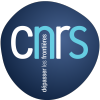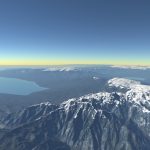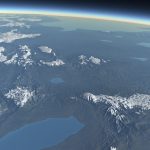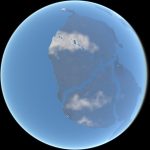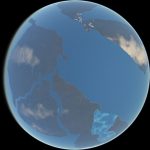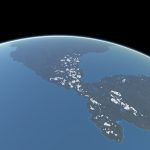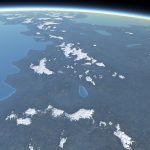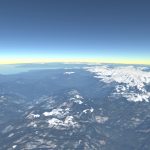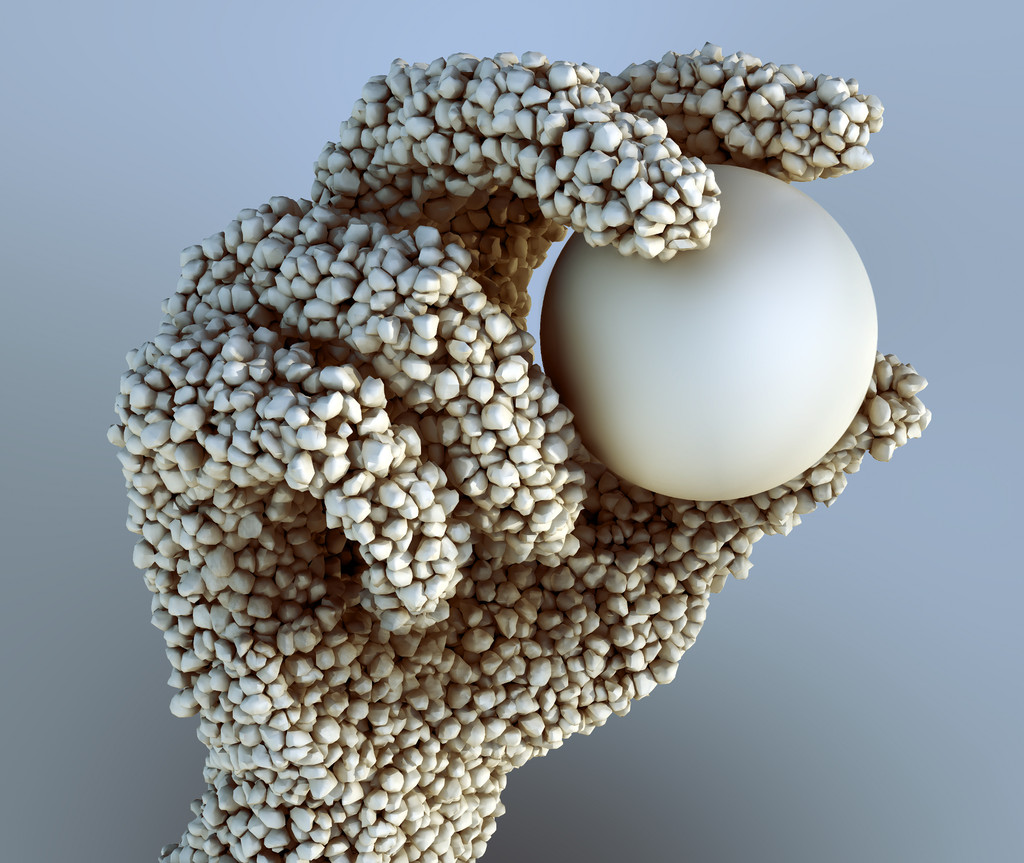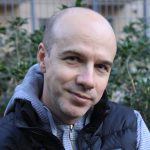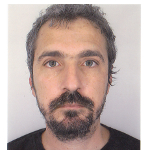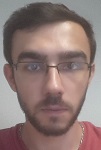
HDWorlds project
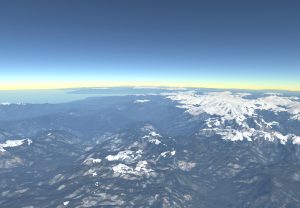
Producing massive 3D models representing large scale virtual worlds with a high level of details is a major challenge in computer graphics. In the industry, there is traditionally a tradeof between the amount of manual authoring and the automatically generated elements of the scene. The goal of the HDWorlds research project is to overcome this limitation so as to synthesize huge detailed scenes using procedural modeling.
Partners
Publications
2022
Preprints, Working Papers, ...
-
- titre
- Porous Flow and Sediment Transport Simulation for Physically-Based Weathering
- auteur
- Theo Jonchier, Arthur Cavalier, Thibault Tricard, Guillaume Gilet, Stephane Merillou
- resume
- In the graphic community, rendering lifelike scenes remains an open challenge. Among the features required to reach photorealism, aging is the crucial detail that breaks the pristine aspect that is rarely observed in real life. Multiple approaches have been proposed, from example-based to physical simulation, to compute the aging of an object. In this context, we present a simulation framework that handles multiple weathering effects causing an object to alter over time. We identify the key phenomena (wetting, drying, erosion, deposition, and dissolution) and propose a base framework to address the aging process. To tackle this challenge, our method adapts a Smooth Particle Hydrodynamics model to represent external fluids (i.e., classical fluid simulation) and internal porous flow. Our framework handles the wetting, drying, and flow in the porous space in a unified approach. We extend pre-existing sediment transport method to allow the sediment transport outside and inside the porous space. With our method, sediments can be eroded from a solid surface, transported across solid objects through their porous space, and deposited to modify other objects’ properties across the scene.
- Accès au texte intégral et bibtex
-


2021
Conference papers
-
- titre
- Cyclostationary Gaussian noise: theory and synthesis
- auteur
- Nicolas Lutz, Basile Sauvage, Jean‐michel Dischler
- resume
- Stationary Gaussian processes have been used for decades in the context of procedural noises to model and synthesize textures with no spatial organization. In this paper we investigate cyclostationary Gaussian processes, whose statistics are repeated periodically. It enables the modeling of noises having periodic spatial variations, which we call "cyclostationary Gaussian noises". We adapt to the cyclostationary context several stationary noises along with their synthesis algorithms: spot noise, Gabor noise, local random-phase noise, high-performance noise, and phasor noise. We exhibit real-time synthesis of a variety of visual patterns having periodic spatial variations.
- Accès au texte intégral et bibtex
-


2020
Journal articles
-
- titre
- Desertscape Simulation
- auteur
- Axel Paris, Adrien Peytavie, Eric Guérin, Oscar Argudo, Eric Galin
- resume
- We present an interactive aeolian simulation to author hot desert scenery. Wind is an important erosion agent in deserts which, despite its importance, has been neglected in computer graphics. Our framework overcomes this and allows generating a variety of sand dunes, including barchans, longitudinal and anchored dunes, and simulates abrasion which erodes bedrock and sculpts complex landforms. Given an input time varying high altitude wind field, we compute the wind field at the surface of the terrain according to the relief, and simulate the transport of sand blown by the wind. The user can interactively model complex desert landscapes, and control their evolution throughout time either by using a variety of interactive brushes or by prescribing events along a user-defined time-line.
- Accès au texte intégral et bibtex
-


-
- titre
- Data-driven Authoring of Large-scale Ecosystems
- auteur
- Konrad Kapp, James Gain, Eric Guérin, Eric Galin, Adrien Peytavie
- resume
- In computer graphics populating a large-scale natural scene with plants in a fashion that both reflects the complex interrelationships and diversity present in real ecosystems and is computationally efficient enough to support iterative authoring remains an open problem. Ecosystem simulations embody many of the botanical influences, such as sunlight, temperature, and moisture, but require hours to complete, while synthesis from statistical distributions tends not to capture fine-scale variety and complexity. Instead, we leverage real-world data and machine learning to derive a canopy height model (CHM) for unseen terrain provided by the user. Trees in the canopy layer are then fitted to the resulting CHM through a constrained iterative process that optimizes for a given distribution of species, and, finally, an understorey layer is synthesised using distributions derived from biome-specific undergrowth simulations. Such a hybrid data-driven approach has the advantage that it incorporates subtle biotic, abiotic, and disturbance factors implicitly encoded in the source data and evidences accepted biological behaviour, such as self-thinning, climatic adaptation, and gap dynamics.
- Accès au texte intégral et bibtex
-


-
- titre
- Content-aware texture deformation with dynamic control
- auteur
- Geoffrey Guingo, Frédéric Larue, Basile Sauvage, Nicolas Lutz, Jean-Michel Dischler, Marie-Paule Cani
- resume
- Textures improve the appearance of virtual scenes by mapping visual details on the surface of 3D objects. Various scenarios – such as real-time animation, interactive texture modelling, or offline post-production – require textures to be deformed in a controllable and plausible manner. We propose a novel approach to model and control texture deformations, which is easy to implement in a standard graphics pipeline. The deformation is implemented at pixel resolution as a warping in the parametric domain. The warping is controlled locally and dynamically by real-time integration along the streamlines of a pre-computed flow field. We propose a technique to pre-compute the flow field from a simple scalar map representing heterogeneous dynamic behaviors. Moreover, to manage sampling issues arising in over-stretched areas during deformation, we provide a mechanism based on re-sampling and texture synthesis. Warping may alternatively be controlled by deformation of the underlying surface, environment parameters or interactive editing, which demonstrates the versatility of our approach.
- Accès au texte intégral et bibtex
-


-
- titre
- Semi‐Procedural Textures Using Point Process Texture Basis Functions
- auteur
- Pascal Guehl, Rémi Allègre, Jean-Michel Dischler, Bedrich Benes, Eric Galin
- resume
- We introduce a novel semi‐procedural approach that avoids drawbacks of procedural textures and leverages advantages of data‐driven texture synthesis. We split synthesis in two parts: 1) structure synthesis, based on a procedural parametric model and 2) color details synthesis, being data‐driven. The procedural model consists of a generic Point Process Texture Basis Function (PPTBF), which extends sparse convolution noises by defining rich convolution kernels. They consist of a window function multiplied with a correlated statistical mixture of Gabor functions, both designed to encapsulate a large span of common spatial stochastic structures, including cells, cracks, grains, scratches, spots, stains, and waves. Parameters can be prescribed automatically by supplying binary structure exemplars. As for noise‐based Gaussian textures, the PPTBF is used as stand‐alone function, avoiding classification tasks that occur when handling multiple procedural assets. Because the PPTBF is based on a single set of parameters it allows for continuous transitions between different visual structures and an easy control over its visual characteristics. Color is consistently synthesized from the exemplar using a multiscale parallel texture synthesis by numbers, constrained by the PPTBF. The generated textures are parametric, infinite and avoid repetition. The data‐driven part is automatic and guarantees strong visual resemblance with inputs.
- Accès au texte intégral et bibtex
-


-
- titre
- Real-Time Hyper-Amplification of Planets
- auteur
- Yann Cortial, Eric Guérin, Adrien Peytavie, Eric Galin
- resume
- We propose an original method for generating planets with a high level of detail in real-time. Our approach relies on a procedural hyper-amplification algorithm: a controlled subdivision process that faithfully reproduces landforms and hydrosphere features at different scales. Starting from low-resolution user-defined control maps that provide information about the elevation , presence of large-scale water bodies and landforms types, we apply subdivision rules to obtain a high resolution hydrologically consistent planet model. We first generate a large-scale river network connected to inner seas and oceans, then synthesize the detailed hy-drographic landscapes, including river tributaries and lakes, mountain ranges, valleys, plateaus, deserts and hills systems. Our GPU implementation allows to interactively explore planets that are produced by tec-tonic simulations, generated procedurally or authored by artists. Basic subdivision Our subdivision Fig. 1 Compared to standard subdivision techniques, our method exhibits natural landform features such as valleys, rivers and varying landscape types.
- Accès au texte intégral et bibtex
-


-
- titre
- Simulation, Modeling and Authoring of Glaciers
- auteur
- Oscar Argudo, Eric Galin, Adrien Peytavie, Axel Paris, Eric Guérin
- resume
- Glaciers are some of the most visually arresting and scenic elements of cold regions and high mountain landscapes. Although snow-covered terrains have previously received attention in computer graphics, simulating the temporal evolution of glaciers as well as modeling their wide range of features has never been addressed. In this paper, we combine a Shallow Ice Approximation simulation with a procedural amplification process to author high-resolution realistic glaciers. Our multiresolution method allows the interactive simulation of the formation and the evolution of glaciers over hundreds of years. The user can easily modify the environment variables, such as the average temperature or precipitation rate, to control the glacier growth, or directly use brushes to sculpt the ice or bedrock with interactive feedback. Mesoscale and smallscale landforms that are not captured by the glacier simulation, such as crevasses, moraines, seracs, ogives, or icefalls are synthesized using procedural rules inspired by observations in glaciology and according to the physical parameters derived from the simulation. Our method lends itself to seamless integration into production pipelines to decorate reliefs with glaciers and realistic ice features.
- Accès au texte intégral et bibtex
-


-
- titre
- Segment Tracing Using Local Lipschitz Bounds
- auteur
- Eric Galin, Eric Guérin, Axel Paris, Adrien Peytavie
- resume
- We introduce Segment Tracing, a new algorithm that accelerates the classical Sphere Tracing method for computing the intersection between a ray and an implicit surface. Our approach consists in computing the Lipschitz bound locally over a segment to improve the marching step computation and accelerate the overall process. We describe the computation of the Lipschitz bound for different operators and primitives. We demonstrate that our algorithm significantly reduces the number of field function queries compared to previous methods, without the need for additional accelerating data-structures. Our method can be applied to a vast variety of implicit models ranging from hierarchical procedural objects built from complex primitives, to simulation-generated implicit surfaces created from many particles.
- Accès au texte intégral et bibtex
-


-
- titre
- Modeling Rocky Scenery using Implicit Blocks
- auteur
- Axel Paris, Adrien Peytavie, Eric Guérin, Jean-Michel Dischler, Eric Galin
- resume
- We present a novel geologically-based method to generate vertical walls of rocky cliffs, crags or promontories. Our method procedurally generates a distribution of fractures in the bedrock to create a set of tiling blocks defined as implicit volumetric primitives. Blocks are in turn implicitly replicated over the vertical parts of the terrain and combined together to obtain a consistent volumetric representation of the fractured bedrock patterns using generalized union and blending operators. Our framework provides multiple levels of control: in addition to automatically generated blocks, the geometry of specific ones can be prescribed by the user using implicit primitives or construction trees, the shape of the blocks can be controlled by several parameters , and the placement rules may adapt according to the underlying geological strata and geometry of the terrain.
- Accès au texte intégral et bibtex
-


Conference papers
- titre
- Semi-Procedural Textures Using Point Process Texture Basis Functions
- auteur
- Pascal Guehl, Rémi Allègre, Jean-Michel Dischler, Bedrich Benes, Eric Galin
- resume
- We introduce a novel semi-procedural approach that avoids drawbacks of procedural textures and leverages advantages of data-driven texture synthesis. We split synthesis in two parts: 1) structure synthesis, based on a procedural parametric model and 2) color details synthesis, being data-driven. The procedural model consists of a generic Point Process Texture Basis Function (PPTBF), which extends sparse convolution noises by defining rich convolution kernels. They consist of a window function multiplied with a correlated statistical mixture of Gabor functions, both designed to encapsulate a large span of common spatial stochastic structures, including cells, cracks, grains, scratches, spots, stains, and waves. Parameters can be prescribed automatically by supplying binary structure exemplars. As for noise-based Gaussian textures, the PPTBF is used as stand-alone function, avoiding classification tasks that occur when handling multiple procedural assets. Because the PPTBF is based on a single set of parameters it allows for continuous transitions between different visual structures and an easy control over its visual characteristics. Color is consistently synthesized from the exemplar using a multiscale parallel texture synthesis by numbers, constrained by the PPTBF. The generated textures are parametric, infinite and avoid repetition. The data-driven part is automatic and guarantees strong visual resemblance with inputs. Applications: this work is related to content creation tools for films and video games, especially procedural texture and material synthesis (e.g. Substance Designer), and inverse procedural modeling (e.g inverse shade tree approach). This paper has been published in the CGF journal (Computer Grapics Forum) in July 2020 and presented at the EGSR conference (Eurographics Symposium on Rendering) in July 2020 where it got an award: Honorable Mention from the Best Papers committee.
- Accès au bibtex
-

-
- titre
- Modeling Rocky Scenery using Implicit Blocks
- auteur
- Axel Paris, Adrien Peytavie, Eric Guérin, Jean-Michel Dischler, Eric Galin
- resume
- We present a novel geologically-based method to generate vertical walls of rocky cliffs, crags or promontories. Our method procedurally generates a distribution of fractures in the bedrock to create a set of tiling blocks defined as implicit volumetric primitives. Blocks are in turn implicitly replicated over the vertical parts of the terrain and combined together to obtain a consistent volumetric representation of the fractured bedrock patterns using generalized union and blending operators. Our framework provides multiple levels of control: in addition to automatically generated blocks, the geometry of specific ones can be prescribed by the user using implicit primitives or construction trees, the shape of the blocks can be controlled by several parameters , and the placement rules may adapt according to the underlying geological strata and geometry of the terrain.
- Accès au texte intégral et bibtex
-


- titre
- Semi-Procedural Textures Using Point Process Texture Basis Functions
- auteur
- Pascal Guehl, Rémi Allègre, Jean-Michel Dischler, Bedrich Benes, Eric Galin
- resume
- We introduce a novel semi-procedural approach that avoids drawbacks of procedural textures and leverages advantages of datadriven texture synthesis. We split synthesis in two parts: 1) structure synthesis, based on a procedural parametric model and 2) color details synthesis, being data-driven. The procedural model consists of a generic Point Process Texture Basis Function (PPTBF), which extends sparse convolution noises by defining rich convolution kernels. They consist of a window function multiplied with a correlated statistical mixture of Gabor functions, both designed to encapsulate a large span of common spatial stochastic structures, including cells, cracks, grains, scratches, spots, stains, and waves. Parameters can be prescribed automatically by supplying binary structure exemplars. As for noise-based Gaussian textures, the PPTBF is used as stand-alone function, avoiding classification tasks that occur when handling multiple procedural assets. Because the PPTBF is based on a single set of parameters it allows for continuous transitions between different visual structures and an easy control over its visual characteristics. Color is consistently synthesized from the exemplar using a multiscale parallel texture synthesis by numbers, constrained by the PPTBF. The generated textures are parametric, infinite and avoid repetition. The data-driven part is automatic and guarantees strong visual resemblance with inputs.
- Accès au bibtex
-

2019
Journal articles
-
- titre
- Local spot noise for procedural surface details synthesis
- auteur
- Arthur Cavalier, Guillaume Gilet, Djamchid Ghazanfarpour
- resume
- To deal with the increasing demand for complex visual details in virtual worlds, procedural methods for content authoring are an expanding field in Computer Graphics. Focusing on on-the-fly texture generation, we present in this paper a content authoring process based on Locally Controlled Spot Noise. Through the control of both the impulses distribution and the spatially-defined kernel, this process can cover a wide range of appearances. In this context, we introduce a new kernel formulation that provides an efficient anisotropic filtering of the generated texture. Furthermore, our method allows users to interactively create the desired appearance by controlling both albedo and meso-geometry of the underlying surface, tackling on-the-fly normal map generation. Our method can be used as an artist friendly tool to model high-quality surface details with direct control over the final appearance in real-time.
- Accès au texte intégral et bibtex
-


-
- titre
- Orometry-based Terrain Analysis and Synthesis
- auteur
- Oscar Argudo, Eric Galin, Adrien Peytavie, Axel Paris, James Gain, Eric Guérin
- resume
- Mountainous digital terrains are an important element of many virtual environments and find application in games, film, simulation and training. Unfortunately, while existing synthesis methods produce locally plausible results they often fail to respect global structure. This is exacerbated by a dearth of automated metrics for assessing terrain properties at a macro level. We address these issues by building on techniques from orometry, a field that involves the measurement of mountains and other relief features. First, we construct a sparse metric computed on the peaks and saddles of a mountain range and show that, when used for classification, this is capable of robustly distinguishing between different mountain ranges. Second, we present a synthesis method that takes a coarse elevation map as input and builds a graph of peaks and saddles respecting a given orometric distribution. This is then expanded into a fully continuous elevation function by deriving a consistent river network and shaping the valley slopes. In terms of authoring, users provide various control maps and are also able to edit, reposition, insert and remove terrain features all while retaining the characteristics of a selected mountain range. The result is a terrain analysis and synthesis method that considers and incorporates orometric properties, and is, on the basis of our perceptual study, more visually plausible than existing terrain generation methods.
- Accès au texte intégral et bibtex
-


-
- titre
- Procedural Riverscapes
- auteur
- Adrien Peytavie, Thibault Dupont, Eric Guérin, Yann Cortial, Benes Benes, James Gain, Eric Galin
- resume
- This paper addresses the problem of creating animated riverscapes through a novel procedural framework that generates the inscribing geometry of a river network and then synthesizes matching real-time water movement animation. Our approach takes bare-earth heightfields as input, derives hydrologically-inspired river network trajectories, carves riverbeds into the terrain, and then automatically generates a corresponding blend-flow tree for the water surface. Characteristics, such as the riverbed width, depth and shape, as well as elevation and flow of the fluid surface, are procedurally derived from the terrain and river type. The riverbed is inscribed by combining compactly supported elevation modifiers over the river course. Subsequently, the water surface is defined as a time-varying continuous function encoded as a blend-flow tree with leaves that are parameterized procedural flow primitives and internal nodes that are blend operators. While river generation is fully automated, we also incorporate intuitive interactive editing of both river trajectories and individual riverbed and flow primitives. The resulting framework enables the generation of a wide range of river forms, ranging from slow meandering rivers to rapids with churning water, including surface effects, such as foam and leaves carried downstream.
- Accès au texte intégral et bibtex
-


-
- titre
- Terrain Amplification with Implicit 3D Features
- auteur
- Axel Paris, Eric Galin, Adrien Peytavie, Eric Guérin, James Gain
- resume
- While three-dimensional landforms, such as arches and overhangs, occupy a relatively small proportion of most computer generated landscapes, they are distinctive and dramatic and have an outsize visual impact. Unfortunately, the dominant heightfield representation of terrain precludes such features, and existing in-memory volumetric structures are too memory intensive to handle larger scenes. In this paper, we present a novel memory-optimized paradigm for representing and generating volumetric terrain based on implicit surfaces. We encode feature shapes and terrain geology using construction trees that arrange and combine implicit primitives. The landform primitives themselves are positioned using Poisson sampling, built using open shape grammars guided by stratified erosion and invasion percolation processes, and, finally, queried during polygonization. Users can also interactively author landforms using high-level modeling tools to create or edit the underlying construction trees, with support for iterative cycles of editing and simulation. We demonstrate that our framework is capable of importing existing large-scale heightfield terrains and amplifying them with such diverse structures as slot canyons, sea arches, stratified cliffs, fields of hoodoos, and complex karst cave networks.
- Accès au texte intégral et bibtex
-


-
- titre
- A Review of Digital Terrain Modeling
- auteur
- Eric Galin, Eric Guérin, Adrien Peytavie, Guillaume Cordonnier, Marie-Paule Cani, Bedrich Benes, James Gain
- resume
- Terrains are a crucial component of three-dimensional scenes and are present in many Computer Graphics applications. Terrain modeling methods focus on capturing landforms in all their intricate detail, including eroded valleys arising from the interplay of varied phenomena, dendritic mountain ranges, and complex river networks. Set against this visual complexity is the need for user control over terrain features, without which designers are unable to adequately express their artistic intent. This article provides an overview of current terrain modeling and authoring techniques, organized according to three categories: procedural modeling, physically-based simulation of erosion and land formation processes, and example-based methods driven by scanned terrain data. We compare and contrast these techniques according to several criteria, specifically: the variety of achievable landforms; realism from both a perceptual and geomorphological perspective; issues of scale in terms of terrain extent and sampling precision; the different interaction metaphors and attendant forms of user-control, and computation and memory performance. We conclude with an in-depth discussion of possible research directions and outstanding technical and scientific challenges.
- Accès au texte intégral et bibtex
-


-
- titre
- Procedural Tectonic Planets
- auteur
- Yann Cortial, Adrien Peytavie, Eric Galin, Eric Guérin
- resume
- We present a procedural method for authoring synthetic tectonic planets. Instead of relying on computationally demanding physically-based simulations, we capture the fundamental phenomena into a procedural method that faithfully reproduces large-scale planetary features generated by the movement and collision of the tectonic plates. We approximate complex phenomena such as plate subduction or collisions to deform the lithosphere, including the continental and oceanic crusts. The user can control the movement of the plates, which dynamically evolve and generate a variety of landforms such as continents, oceanic ridges, large scale mountain ranges or island arcs. Finally, we amplify the large-scale planet model with either procedurally-defined or real-world elevation data to synthesize coherent detailed reliefs. Our method allows the user to control the evolution of an entire planet interactively, and to trigger specific events such as catastrophic plate rifting.
- Accès au texte intégral et bibtex
-


Conference papers
- titre
- Procedural Texture Extrapolation
- auteur
- Pascal Guehl, Rémi Allegre, Jean-Michel Dischler, Bedrich Benes, Eric Galin
- resume
- We introduce a new texture basis function which generalizes noise models and can handle various kinds of spatial stochastic structures. More versatile than noise, its genericity offers improved texture authoring possibilities compared to by–example texture synthesis.
- Accès au bibtex
-

- titre
- Dendry: A Procedural Model for Dendritic Patterns
- auteur
- Mathieu Gaillard, Bedrich Benes, Eric Guérin, Eric Galin, Damien Rohmer, Marie-Paule Cani
- Accès au bibtex
-

-
- titre
- Anisotropic Filtering for On-the-fly Patch-based Texturing
- auteur
- Nicolas Lutz, Basile Sauvage, Frédéric Larue, Jean-Michel Dischler
- resume
- On-the-fly patch-based texturing consists of choosing at run-time, for several patches within a tileable texture, one random candidate among a pre-computed set of possible contents. This category of methods generates unbounded textures, for which filtering is not straightforward, because the screen pixel footprint may overlap multiple patches in texture space, i.e. different randomly chosen contents. In this paper, we propose a real-time anisotropic filtering which is fully compliant with the standard graphics pipeline. The main idea is to pre-filter the contents independently, store them in an atlas, and combine them at run-time to produce the final pixel color. The patch-map, referencing to which patch belong the fetched texels, requires a specific filtering approach, in order to recover the patches that overlap at low resolutions. In addition, we show how this method can achieve blending at patch boundaries in order to further reduce visible seams, without modification of our filtering algorithm.
- Accès au texte intégral et bibtex
-


Book sections
- titre
- Artificial Intelligence
- auteur
- Eric Guérin, Orhun Aydin, Ali Mahdavi-Amiri
- Accès au bibtex
-

2018
Journal articles
- titre
- Urban Weathering: Interactive Rendering of Polluted Cities
- auteur
- Imanol Munoz-Pandiella, Carles Bosch, Nicolas Mérillou, Gustavo Patow, Stéphane Mérillou, Xavier Pueyo
- Accès au bibtex
-

-
- titre
- Procedural Cloudscapes
- auteur
- Antoine Webanck, Yann Cortial, Eric Guérin, Eric Galin
- resume
- We present a phenomenological approach for modeling and animating cloudscapes. We propose a compact procedural model for representing the different types of cloud over a range of altitudes. We define primitive-based field functions that allow the user to control and author the cloud cover over large distances easily. Our approach allows us to animate cloudscapes by morphing: instead of simulating the evolution of clouds using a physically-based simulation, we compute the movement of clouds using key-frame interpolation and tackle the morphing problem as an Optimal Transport problem. The trajectories of the cloud cover primitives are generated by solving an Anisotropic Shortest Path problem with a cost function that takes into account the elevation of the terrain and the parameters of the wind field.
- Accès au texte intégral et bibtex
-


Conference papers
-
- titre
- Amplification de Terrains avec des caractéristiques implicites 3D
- auteur
- Axel Paris, Eric Galin, Adrien Peytavie, Eric Guérin, J Gain
- resume
- While three-dimensional landforms, such as arches and overhangs, occupy a relatively small proportion of most computer-generated landscapes, they are distinctive and dramatic and have an outsize visual impact. Unfortunately, the dominant heightfield representation of terrain precludes such features, and existing in-memory volumetric structures are too memory intensive to handle larger scenes. In this paper, we present a novel memory-optimized paradigm for representing and generating volumetric terrain based on implicit surfaces. We encode feature shape and terrain geology using construction trees that arrange and combine implicit primitives. The landform primitives themselves are positioned using Poisson sampling, built using open shape grammars guided by stratified erosion and invasion percolation processes, and, finally, queried during polygonization.
- Accès au texte intégral et bibtex
-


2017
Journal articles
- titre
- Real-Time Solar Exposure Simulation in Complex Cities
- auteur
- I. Muñoz-Pandiella, Carles Bosch Geli, N. Mérillou, X. Pueyo, Stéphane Mérillou
- Accès au bibtex
-

-
- titre
- Authoring Landscapes by Combining Ecosystem and Terrain Erosion Simulation
- auteur
- Guillaume Cordonnier, Eric Galin, James Gain, Bedrich Benes, Eric Guérin, Adrien Peytavie, Marie-Paule Cani
- resume
- We introduce a novel framework for interactive landscape authoring that supports bi-directional feedback between erosion and vegetation simulation. Vegetation and terrain erosion have strong mutual impact and their interplay innuences the overall realism of virtual scenes. Despite their importance, these complex interactions have been neglected in computer graphics. Our framework overcomes this by simulating the eeect of a variety of geomor-phological agents and the mutual interaction between diierent material and vegetation layers, including rock, sand, humus, grass, shrubs, and trees. Users are able to exploit these interactions with an authoring interface that consistently shapes the terrain and populates it with details. Our method, validated through side-by-side comparison with real terrains, can be used not only to generate realistic static landscapes, but also to follow the temporal evolution of a landscape over a few centuries.
- Accès au texte intégral et bibtex
-


-
- titre
- Bi-Layer textures: a Model for Synthesis and Deformation of Composite Textures
- auteur
- Geoffrey Guingo, Basile Sauvage, Jean-Michel Dischler, Marie-Paule Cani
- resume
- We propose a bi-layer representation for textures which is suitable for on-the-fly synthesis of unbounded textures from an input exemplar. The goal is to improve the variety of outputs while preserving plausible small-scale details. The insight is that many natural textures can be decomposed into a series of fine scale Gaussian patterns which have to be faithfully reproduced, and some non-homogeneous, larger scale structure which can be deformed to add variety. Our key contribution is a novel, bi-layer representation for such textures. It includes a model for spatially-varying Gaussian noise, together with a mechanism enabling synchronization with a structure layer. We propose an automatic method to instantiate our bi-layer model from an input exemplar. At the synthesis stage, the two layers are generated independently, synchronized and added, preserving the consistency of details even when the structure layer has been deformed to increase variety. We show on a variety of complex, real textures, that our method reduces repetition artifacts while preserving a coherent appearance.
- Accès au texte intégral et bibtex
-


-
- titre
- Interactive Example-Based Terrain Authoring with Conditional Generative Adversarial Networks
- auteur
- Eric Guérin, Julie Digne, Eric Galin, Adrien Peytavie, Christian Wolf, Bedrich Benes, Benoît Martinez
- resume
- Authoring virtual terrains presents a challenge and there is a strong need for authoring tools able to create realistic terrains with simple user-inputs and with high user control. We propose an example-based authoring pipeline that uses a set of terrain synthesizers dedicated to specific tasks. Each terrain synthesizer is a Conditional Generative Adversarial Network trained by using real-world terrains and their sketched counterparts. The training sets are built automatically with a view that the terrain synthesizers learn the generation from features that are easy to sketch. During the authoring process, the artist first creates a rough sketch of the main terrain features, such as rivers, valleys and ridges, and the algorithm automatically synthesizes a terrain corresponding to the sketch using the learned features of the training samples. Moreover, an erosion synthesizer can also generate terrain evolution by erosion at a very low computational cost. Our framework allows for an easy terrain authoring and provides a high level of realism for a minimum sketch cost. We show various examples of terrain synthesis created by experienced as well as inexperienced users who are able to design a vast variety of complex terrains in a very short time.
- Accès au texte intégral et bibtex
-


-
- titre
- Coherent multi-layer landscape synthesis
- auteur
- Oscar Argudo, Carlos Andujar, Antonio Chica, Eric Guérin, Julie Digne, Adrien Peytavie, Eric Galin
- resume
- We present an efficient method for generating coherent multi-layer landscapes. We use a dictionary built from exemplars to synthesize high-resolution fully featured terrains from input low-resolution elevation data. Our example-based method consists in analyzing real-world terrain examples and learning the procedural rules directly from these inputs. We take into account not only the elevation of the terrain, but also additional layers such as the slope, orientation, drainage area, the density and distribution of vegetation, and the soil type. By increasing the variety of terrain exemplars, our method allows the user to synthesize and control different types of landscapes and biomes, such as temperate or rain forests, arid deserts and mountains.
- Accès au texte intégral et bibtex
-





